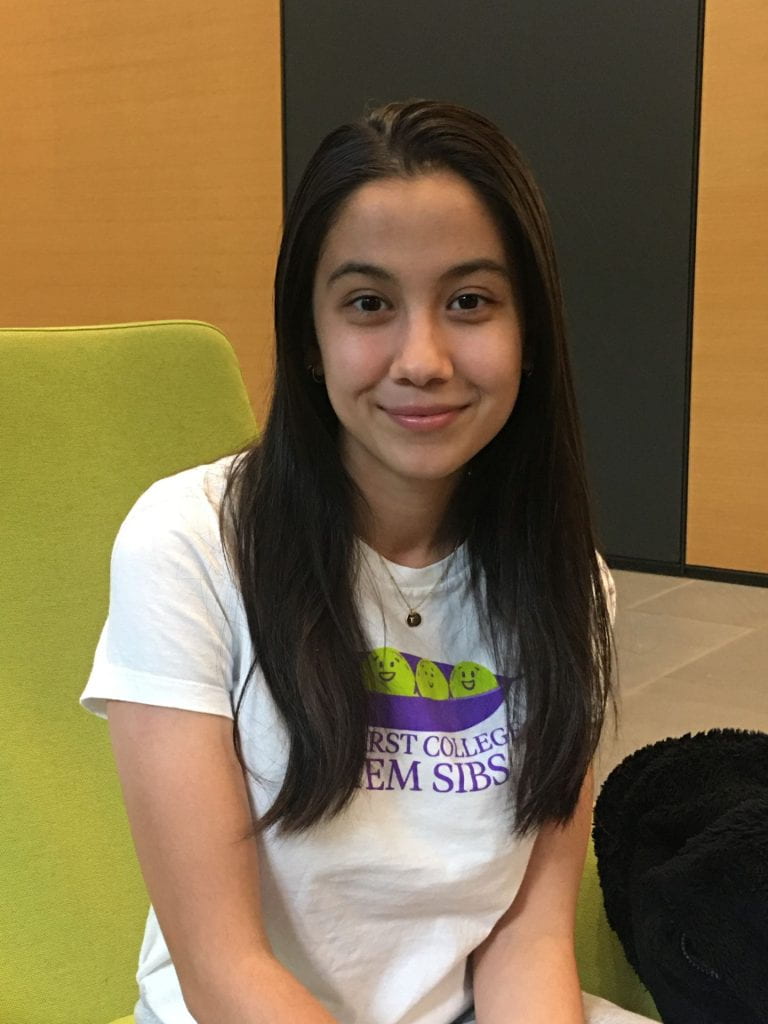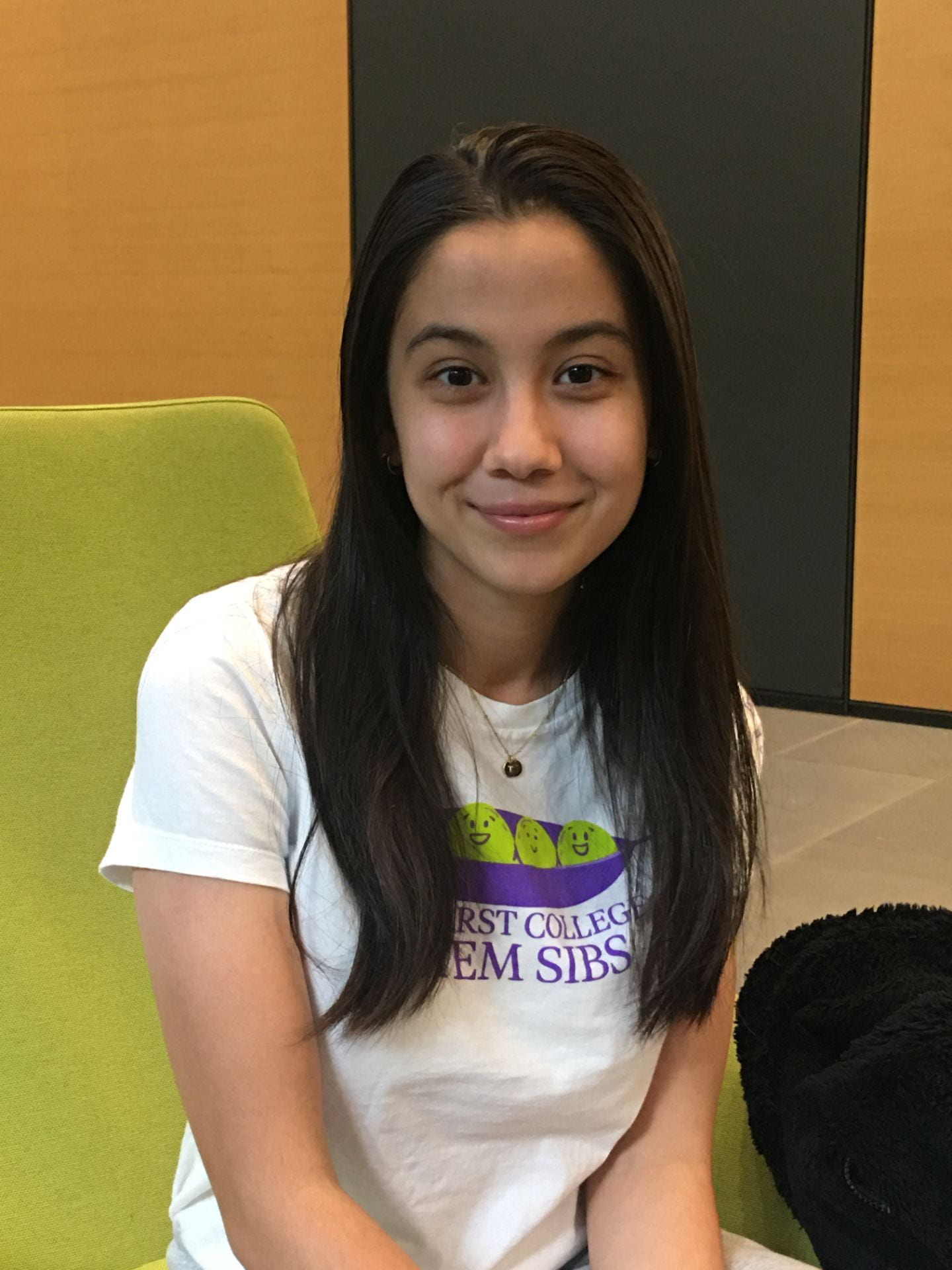This piece was co-authored by Amy Zheng.

STEMsibs, derived from “STEM siblings,” is a student group with a mission to guide new and undeclared students throughout their STEM journey at Amherst College. The STEMsibs offer monthly informational panels hosted by upperclassmen to form a tight-knit STEM community.
Tavus Atajanova, one of the group’s organizers, describes STEMsibs as “a community for upperclassmen for communities of underclassmen… literally a big family.”
Meet Tavus!
To learn more about STEMsibs, we interviewed Atajanova, who is a senior thesis student at Amherst College majoring in Sociology and Biochemistry. She got involved in STEMsibs after getting acquainted with Jess Martin and Sarah Buhl while searching for a job at the Science Center.
Throughout her time at Amherst, Atajanova has been involved with mentoring young students interested in STEM. Outside of working with STEMsibs, Atajanova is also the founder and president of the Bioethics Society.
Who runs STEMsibs and how does it work?
“[STEMsibs] is definitely not a one person job,” Atajanova says.
The organization runs on the collaboration between upperclassmen and the administration at the Science Center. When trying to find panelists from events, word-of-mouth plays a huge role.
Behind the scenes, Atajanova makes the fliers and reaches out to prospective panelists. She also mentions that “it’s very much a group effort to produce what we’re producing… if it was just me [sharing] all the stuff, it would be very boring.”
What kinds of events does STEMsibs host?
Transitioning to in-person-programming this year, the STEMsibs host monthly panel discussions in which upperclassmen answer questions related to the meeting’s topic. This year’s September and October panels were “Maneuvering Amherst as a STEM student” and “Choosing Your Next Courses,” respectively.
The panels start with Atajanova asking a series of pre-prepared questions and then the floor opens up to the audience for questions and suggestions. She believes STEMsibs is an invaluable resource for underclassmen because “it can be a little scary if you’re trying to figure [out how things work] all by yourself.”
What is in the works for STEMsibs?
Besides panel discussions, Atajanova reveals STEMsibs has more plans in store: “in the near future, there’s the STEMsgiving, which is a little Thanksgiving event we are gonna do.”
She explains STEMsgiving by comparing the event to Take Your Professor Out (TYPO), which allows students to get funding from the college to invite a professor out to eat. Like TYPO, Atajanova mentions that STEMsgiving is “a way to get to know your professors outside of the classroom setting, and it’s [our] way of saying, ‘Hey, professors are here to help you and get to know you.’”
Instead of eating in a formal setting, the initial plans for STEMsgiving include a catered meal at the Science Center.
“[We might] have a couple professors from various departments come and join us–very different from our typical panel discussion,” Atajanova says. “[It’s] a way to get past those barriers that might be holding you back from going to office hours… [and learn] about how these professors got to where they are or their research.”
What do you hope that members will gain out of STEMsibs?
It is no secret that getting acquainted with research and courses can be daunting, especially as a first or second-year student.
Atajanova emphasizes that “[STEMsibs] is just part of a way to make either current STEM students or people who are thinking about being STEM students welcome into the entire community.”
While discussing how to transition the previously online STEMsibs community in-person, Atajanova advocated for creating a community where students can learn from each other.
“You kind of meet people from various backgrounds and various expertise with all kinds of skills and stories — listening and learning from their experiences and applying [them yourself] is how Amherst students develop,” says Atajanova.
STEMsibs’ primary goal for members is to make them more comfortable within the STEM community at Amherst. By attending the panel discussions, students learn and ask questions about choosing courses, performing research, and more. And who can pass up the refreshments and signature STEMsibs t-shirts designed by Sarah Buhl?
What did you get out of the experience?
As a senior who understands the nuances of being a STEM major at the College, being able to contribute something useful to younger students strongly resonates with Atajanova.
“Being able to do it as a senior kinda feels like I’m the older sibling. It has taught me that I know a lot of things but also that there are a lot of people who come [to the events].” Atajanova goes on to say that “it’s comforting to know that I am delivering something that people want to know… and [it’s just] a nice feeling.”
If you are interested in becoming a STEM sibling, join the GroupMe (https://groupme.com/join_group/69434920/5vg2oKFe), and reach out to Tavus Atajanova (tatajanova23@amherst.edu) or Sarah Buhl (sbuhl@amherst.edu) with any questions!

You must be logged in to post a comment.